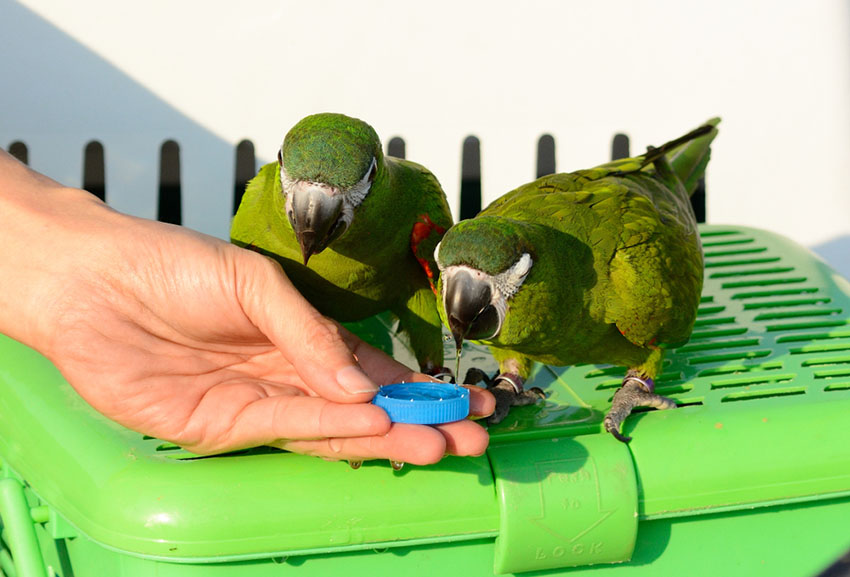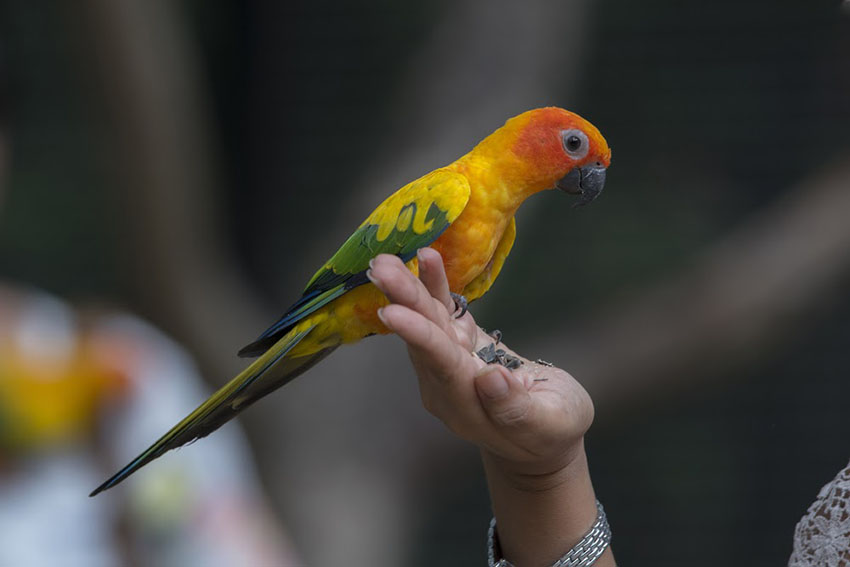With so many parrot species, each with different personalities and brain sizes, it's difficult to create a "one size fits all" guide to parrot training. However, there are still several key points that apply to most birds.

Hahn's Macaws are soon hand-tamed
There a few general rules to bear in mind when training parrots.
- Start training as early as possible. Young birds tend to "get it" very quickly, while older birds are usually a bit more stubborn and set in their ways.
- Make your parrot your best buddy. Your pets need to get used to you before they can be expected to take on board tricks and training. Once they're used to seeing your hand and arm in the enclosure, during feeding and cleaning, they'll soon learn that it's not something they need to worry about. Allow your hand to rest against the bars of the cage, and generally hang around in the vicinity.
- Be consistent. Carry out the daily training sessions at roughly the same time. If it's only one person carrying out the training, that will speed things along too.
- You'll know when you’ve reached a stage of friendship when the parrot no longer tries to escape from you or squawk at you angrily when you get too close. With that stage reached, you can take it to the next level.

This Sun Conure has no fear of human hands
Note: For smaller parrots, including Parakeets (Budgies) and Cockatiels, refer to the Taming a Parakeet section in the Omlet Budgerigar Guide. Many smaller parrots can be hand-trained using the methods described there.
Comments
Paul, 3 January 2020
I have a 1year old and a 4 year old quaver parrots female and male is it to late to tame them?
Qaasim, 24 July 2019
hi i need help with training my parrot alexandrine his 4 months old